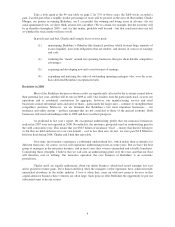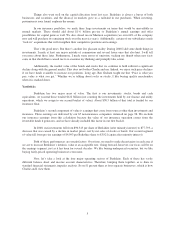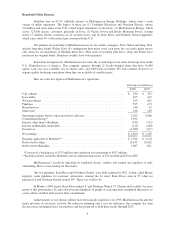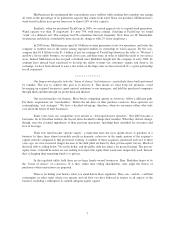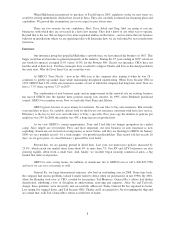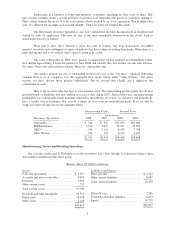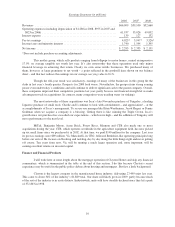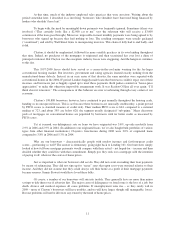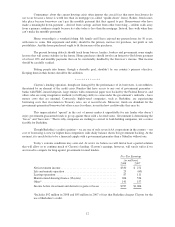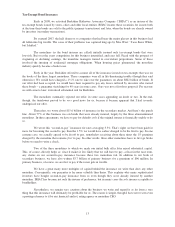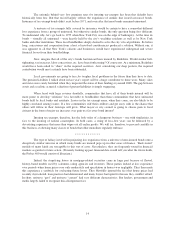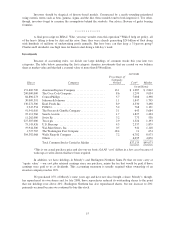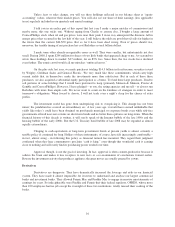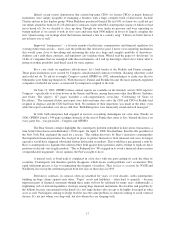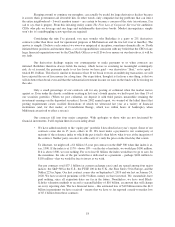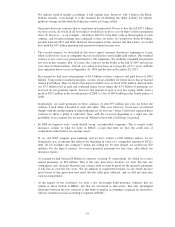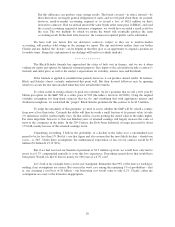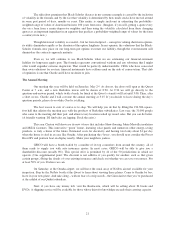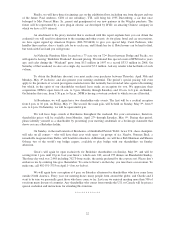Berkshire Hathaway 2008 Annual Report Download - page 16
Download and view the complete annual report
Please find page 16 of the 2008 Berkshire Hathaway annual report below. You can navigate through the pages in the report by either clicking on the pages listed below, or by using the keyword search tool below to find specific information within the annual report.The rationale behind very low premium rates for insuring tax-exempts has been that defaults have
historically been few. But that record largely reflects the experience of entities that issued uninsured bonds.
Insurance of tax-exempt bonds didn’t exist before 1971, and even after that most bonds remained uninsured.
A universe of tax-exempts fully covered by insurance would be certain to have a somewhat different
loss experience from a group of uninsured, but otherwise similar bonds, the only question being how different.
To understand why, let’s go back to 1975 when New York City was on the edge of bankruptcy. At the time its
bonds – virtually all uninsured – were heavily held by the city’s wealthier residents as well as by New York
banks and other institutions. These local bondholders deeply desired to solve the city’s fiscal problems. So before
long, concessions and cooperation from a host of involved constituencies produced a solution. Without one, it
was apparent to all that New York’s citizens and businesses would have experienced widespread and severe
financial losses from their bond holdings.
Now, imagine that all of the city’s bonds had instead been insured by Berkshire. Would similar belt-
tightening, tax increases, labor concessions, etc. have been forthcoming? Of course not. At a minimum, Berkshire
would have been asked to “share” in the required sacrifices. And, considering our deep pockets, the required
contribution would most certainly have been substantial.
Local governments are going to face far tougher fiscal problems in the future than they have to date.
The pension liabilities I talked about in last year’s report will be a huge contributor to these woes. Many cities
and states were surely horrified when they inspected the status of their funding at yearend 2008. The gap between
assets and a realistic actuarial valuation of present liabilities is simply staggering.
When faced with large revenue shortfalls, communities that have all of their bonds insured will be
more prone to develop “solutions” less favorable to bondholders than those communities that have uninsured
bonds held by local banks and residents. Losses in the tax-exempt arena, when they come, are also likely to be
highly correlated among issuers. If a few communities stiff their creditors and get away with it, the chance that
others will follow in their footsteps will grow. What mayor or city council is going to choose pain to local
citizens in the form of major tax increases over pain to a far-away bond insurer?
Insuring tax-exempts, therefore, has the look today of a dangerous business – one with similarities, in
fact, to the insuring of natural catastrophes. In both cases, a string of loss-free years can be followed by a
devastating experience that more than wipes out all earlier profits. We will try, therefore, to proceed carefully in
this business, eschewing many classes of bonds that other monolines regularly embrace.
************
The type of fallacy involved in projecting loss experience from a universe of non-insured bonds onto a
deceptively-similar universe in which many bonds are insured pops up in other areas of finance. “Back-tested”
models of many kinds are susceptible to this sort of error. Nevertheless, they are frequently touted in financial
markets as guides to future action. (If merely looking up past financial data would tell you what the future holds,
the Forbes 400 would consist of librarians.)
Indeed, the stupefying losses in mortgage-related securities came in large part because of flawed,
history-based models used by salesmen, rating agencies and investors. These parties looked at loss experience
over periods when home prices rose only moderately and speculation in houses was negligible. They then made
this experience a yardstick for evaluating future losses. They blissfully ignored the fact that house prices had
recently skyrocketed, loan practices had deteriorated and many buyers had opted for houses they couldn’t afford.
In short, universe “past” and universe “current” had very different characteristics. But lenders, government and
media largely failed to recognize this all-important fact.
14


